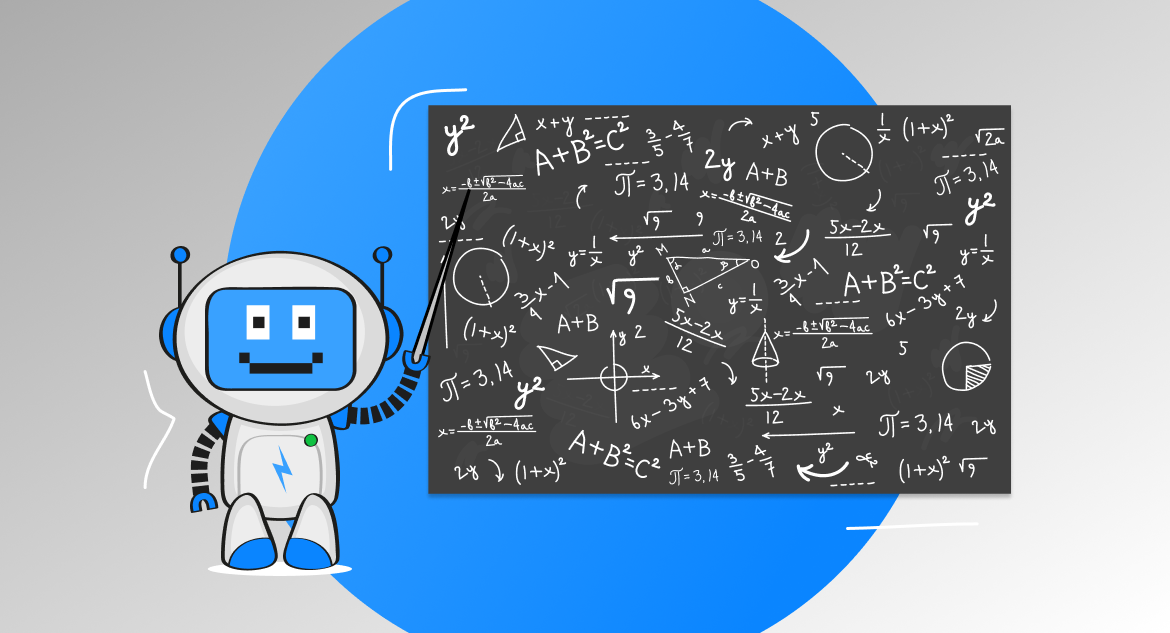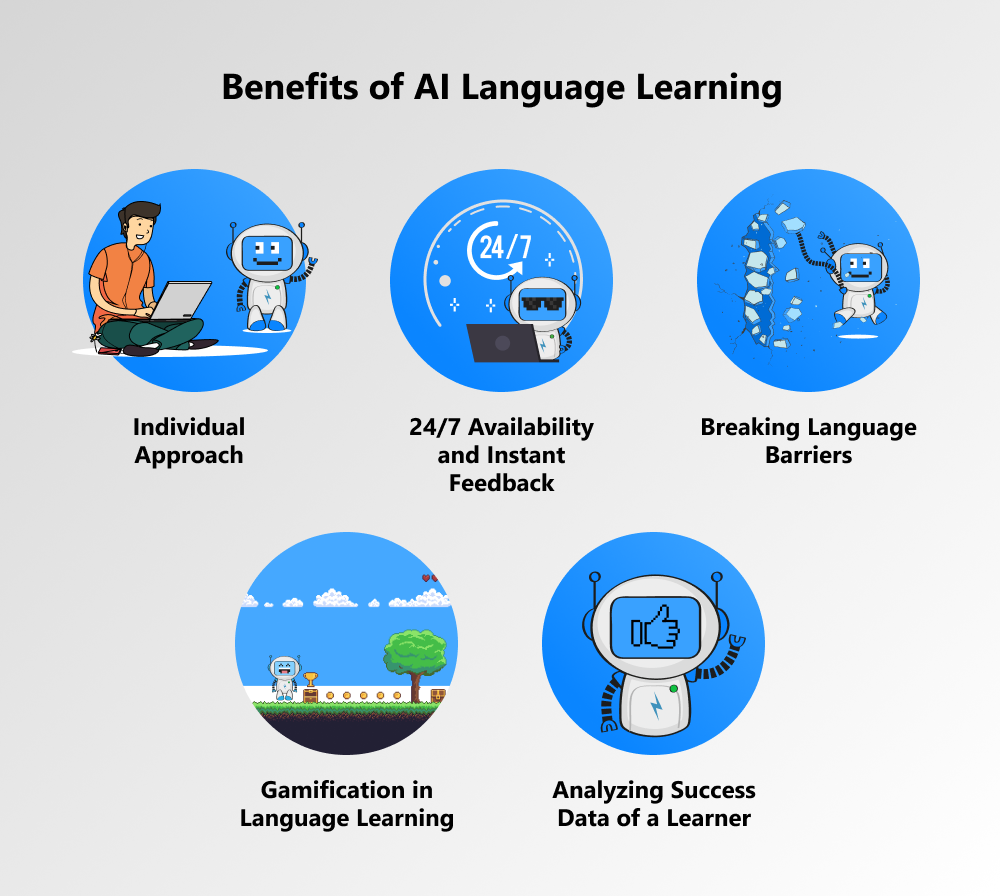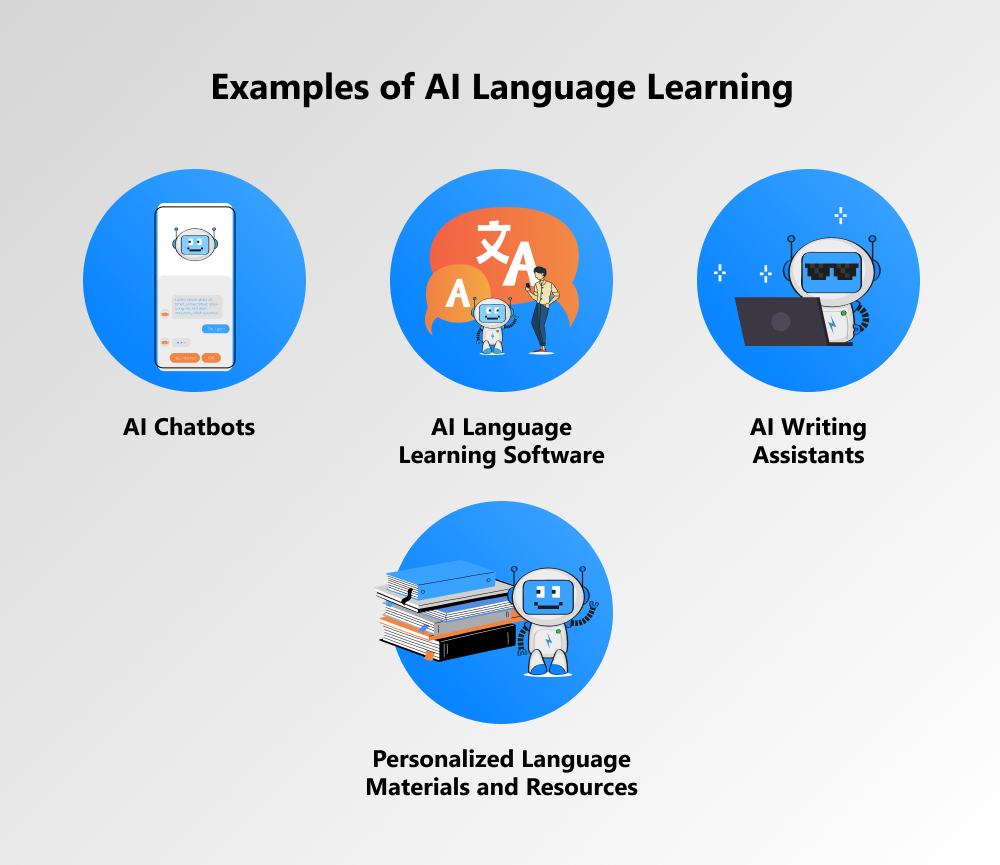Knowledge of foreign languages is a very significant advantage in the labor market today. According to the British Council, more than 1.5 billion people around the world are currently learning English. It provides a competitive edge and increases your professional value. By the way, being proficient in several languages opens wide job opportunities and sets your CV apart from the crowd. Thanks to modern technologies and artificial intelligence (AI), learning foreign languages becomes easier, faster, and more interesting. Let's find out how teachers use artificial intelligence in language learning.
written by:
Anton Rykov
Product Manager,
Qulix Systems
Knowledge of foreign languages is a very significant advantage in the labor market today. According to the British Council, more than 1.5 billion people around the world are currently learning English. It provides a competitive edge and increases your professional value. By the way, being proficient in several languages opens wide job opportunities and sets your CV apart from the crowd. Thanks to modern technologies and artificial intelligence (AI), learning foreign languages becomes easier, faster, and more interesting. Let's find out how teachers use artificial intelligence in language learning.
Contents
Benefits for Language Learners and Teachers
Individual Approach
AI–based solutions offer a personalized approach to people who want to learn a new language. When you visit group lessons, a teacher often doesn't have enough time and conditions to pay a lot of attention to every learner and properly correct pronunciation, explain a rule or unknown word, or analyze mistakes. Educators usually have to focus on the average pupils, while advanced learners become bored in the classroom, and low–performing students have no chances to catch up with the rest of the class.
AI learning app will give you the opportunity to take into account all your wishes and peculiarities when learning any foreign language — English, German, French, Spanish, and so on. For example, you can select only those topics that are interesting or important to you. Imagine that you're planning to go on a business trip and need to improve your language in order to be able to freely discuss a project with your foreign colleagues. You can learn the relevant vocabulary and not waste time studying unnecessary topics.
With the help of AI–powered tools integrated into the education process, teachers will be able to collect gigabytes of data about their students, their interests, abilities, and other useful information. Analyzing this data will help educators better understand their pupils and create personalized programs for them based on their interests and cultural background. AI algorithms allow tutors to predict the future results and progress of the learners.
24/7 Availability and Instant Feedback
AI–based language learning apps and systems are ideal for busy people as they offer them flexible class schedules. They will be able to manage their time and study where it's convenient for them: at home, at the office, on a trip, etc. Unlike a chatbot, a tutor won't be able to chat with a learner at two in the morning and immediately answer all his or her questions. Do you need to urgently prepare for an exam or quickly learn new vocabulary for tomorrow's interview? This is not a problem anymore because a machine is ready to help users upgrade their language skills at any time they want.
In contrast to human tutors, smart tools provide you with quick feedback. When there are a lot of learners in the classroom, a teacher can't check their tests and essays immediately. As a result, pupils receive results after a few days, but they no longer remember why they made certain mistakes. The AI–powered language learning systems can automatically evaluate the tests and essays as soon as the learners deliver them. They will not only point out the mistakes but also provide recommendations on how to avoid them in the future. This will allow the pupils to correct them without delay and remember the particular rule or word.
As for the educators, AI language learning solutions can identify drawbacks in their curriculum and help them understand what can be improved in lectures or learning activities, which aspects of the language are most difficult for the learners, or who needs additional assistance. As smart solutions are actively used in the education sector, educators will have more time to manage the language learning process and mentor their pupils.
Breaking Language Barriers
People often give up their foreign language learning courses due to language barriers or embarrassment. Imagine that you are sitting in a classroom that is full of 30 learners. A tutor asks you a question, you know the answer, but you can't force yourself to speak because you think that you have an awful accent, you don't know how to pronounce this or that word, or you are simply a very shy person.
In fact, thousands of pupils have to cope with language anxiety every day, which results in a lack of progress when they are learning a new language (French, German, Spanish, Chinese, and so on). For example, some learners admit that the thought that they can be wrong literally paralyzes and demotivates them.
You can communicate with your AI tutor as much as you like. You could not be afraid of being laughed at if you ask something a few times. You won't be embarrassed to give the wrong answer or take more time to think over your answer. Your artificial intelligence–powered app will wait as much time as you need it.
Gamification in Language Learning
Foreign language learning should be an interesting process for both adults and children. Memorizing new vocabulary and grammar rules doesn't motivate you to learn a language at all, does it? Learners often give up their foreign language learning courses due to boredom.
AI solutions use gamification to motivate people to learn foreign languages. How does it work? For example, the Lingualeo app rewards users with meatballs when they do their exercises. These meatballs are used to feed the lion cub, an assistant that accompanies users during their learning journey. To maintain the users' interest, some developers create chatbots that imitate the voice of a celebrity, for example, your favorite actor, musician, or sportsman. Would you like to discuss horrors in English with Stephen King?
Analyzing Success Data of a Learner
AI language learning solutions allow educators to monitor the progress of their pupils. The tutor will be able to identify the weak points and explain the grammar rules or an unknown word. Today, artificial intelligence can analyze what emotions a user is experiencing when doing an exercise or reading a textbook. Based on the received data, an AI system helps tutors make foreign language lessons more interesting. While a pupil is reading the textbook built into his or her iPad, the program detects what he or she doesn't like and redesigns the interface.
AI Language Learning: Application and Examples
Artificial intelligence software uses various algorithms and methods like big data processing, machine learning, and natural language processing to improve the learners' learning experience and skills. Let's see how these methods are applied nowadays.
AI Chatbots
A chatbot is a program that simulates a real conversation with a user. It uses AI algorithms to imitate human beings and respond to verbal or written requests to help you find answers. They understand language rather than just commands. This means that AI chatbots become smarter after each dialogue.
Chatbots can be effectively used when teaching and learning foreign languages. Robots can check pupils' works, answer their questions, make recommendations on what they need to study additionally, and what topics and rules to look for. Some studies revealed that most students enjoyed talking with chatbots rather than with their human tutors or partners.
In spite of the fact that AI chatbots help students improve their language skills, expand their vocabulary, learn to speak and listen to foreign speech, there are several disadvantages. They can't fully replace teachers as they follow a predetermined scenario and may not notice some errors. That's why educators prefer using them as assistants that are now widely used in education.
Examples: Mike, Elbot, Cleverbot, JohnLennon, Zabaware, and so on.
AI Language Learning Software (Apps and Platforms)
AI–powered applications and platforms are currently gaining popularity because they provide access to a huge number of learning resources and are user–friendly. They're based on spaced repetition, speech recognition, NLP, gamification, and so on. The development of these applications involves two technical aspects:
- traditional graphical user interface with speech recognition. These solutions look like ordinary textbooks with exercises. Students fill in the gaps, combine words with phrases, match words with pictures, and so on.
- language interface with dialogue function. These tools act like simple chatbots. Students should answer the question using a keyword. If this keyword is correct, the system will give a predetermined answer. But these systems respond only to simple words and can't always recognize grammatical errors since they are limited to answers and a given list of mistakes.
Examples: Duolingo, Busuu, Speexx, Babbel, Memrise, Magiclingua, and many more.
AI Writing Assistants
Artificial intelligence technologies have been successfully used to create online platforms where students can check their essays for grammatical errors and get recommendations on how to improve their text. These platforms are based on machine learning and NLP, which not only help users to correct grammatical, punctuation, and stylistic errors, but also scan them for plagiarism. This tool will allow students to track and correct mistakes by remembering them, while teachers can check the student's work with the help of a similar service to detect the most common mistakes. This will significantly reduce the time spent on reviewing student papers.
Examples: Grammarly, Essaybot, AI Writer, Textio, Textly AI, ProWriting Aid, etc.
Personalized Language Materials and Resources
Modern technology can be used to create teaching materials that are tailored to the unique needs of each student. Artificial intelligence analyzes information about students, their level of training, learning pace, and other essential data to provide them with the learning materials they need. Teachers, in turn, will be able to adapt their programs to each student in order to achieve the best results. AI solutions allow teachers to see how their curriculum can be improved and made more vivid and engaging.
How does it work? For example, a large number of students give the wrong answer to the same task. The software will immediately notify the tutor about it and give students a hint to help them do this task properly. They don't need to wait when the teacher comes and helps them. Thanks to the hint, the students will be able to fix a mistake at once and remember it.
Will AI Technology Replace Foreign Language Teachers?
It's obvious that artificial intelligence is changing our lives for the better in all fields, including traveling and language learning. Neural networks and machine learning provide access to useful and engaging content that is tailored to the interests and needs of each student, motivating him or her to visit language learning classes. AI solutions can assess the progress and allow the educator to quickly change the curriculum if required. In addition, these systems speed up test checking and provide instant feedback to the students.
Will robots replace teachers? Educators definitely shouldn't worry about their jobs in the near future. First of all, students treat the tutor not only as a carrier of information but also as a mentor or even friend. Secondly, the student feels his or her responsibility to their mentors. Machines need to analyze thousands of options to give any advice that is not related to learning and studies. We all need human attention and attitude; that's why AI solutions can be considered only as effective assistants to the teacher and not as the teachers themselves.
Do you have any ideas regarding AI language learning app development and need a reliable partner to turn your project into reality? Our specialists can help you build your app from scratch. Don’t hesitate to contact our Support Team to discuss all details or visit our home page.

Contacts
Feel free to get in touch with us! Use this contact form for an ASAP response.
Call us at +44 151 528 8015
E-mail us at request@qulix.com








